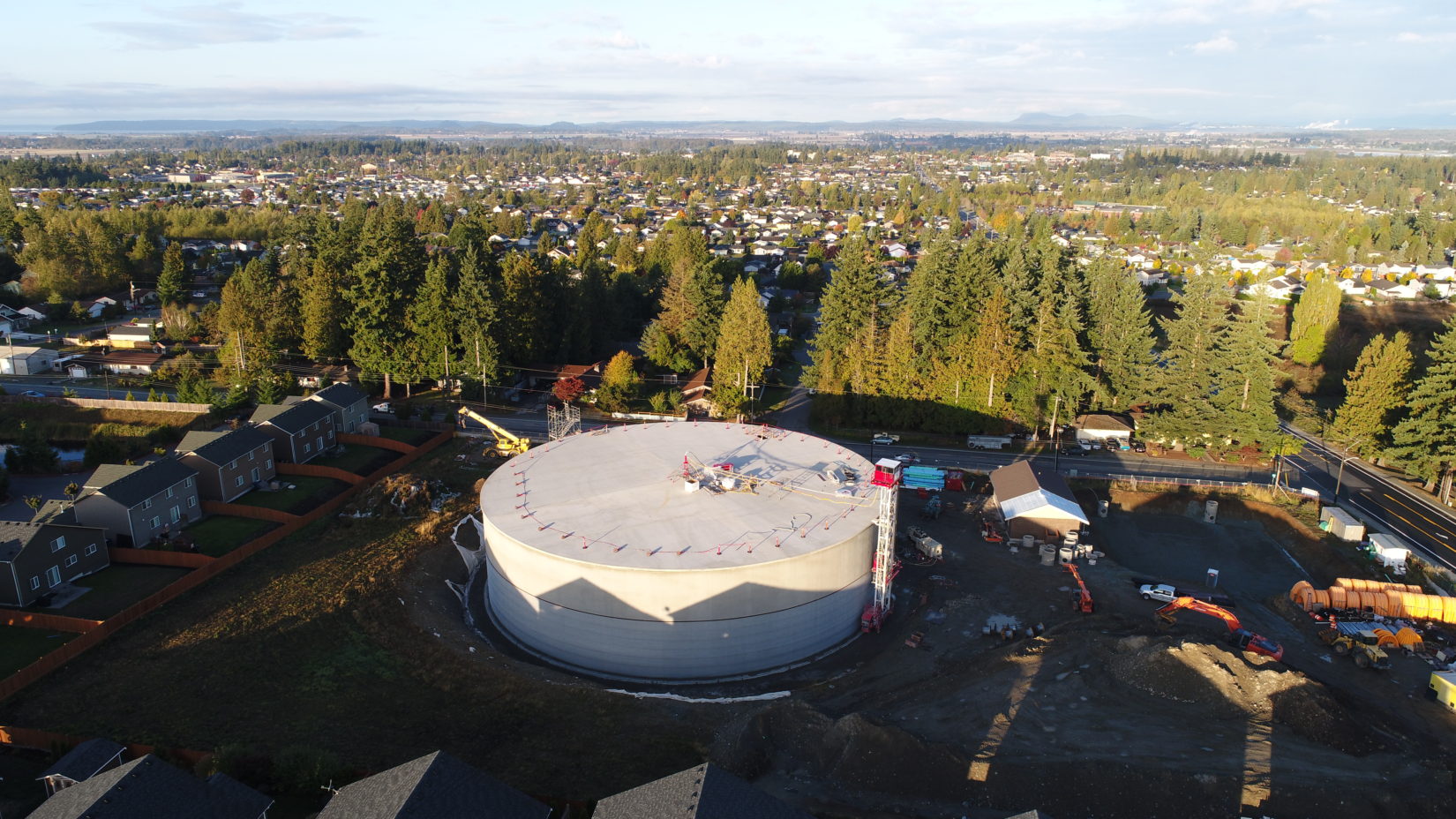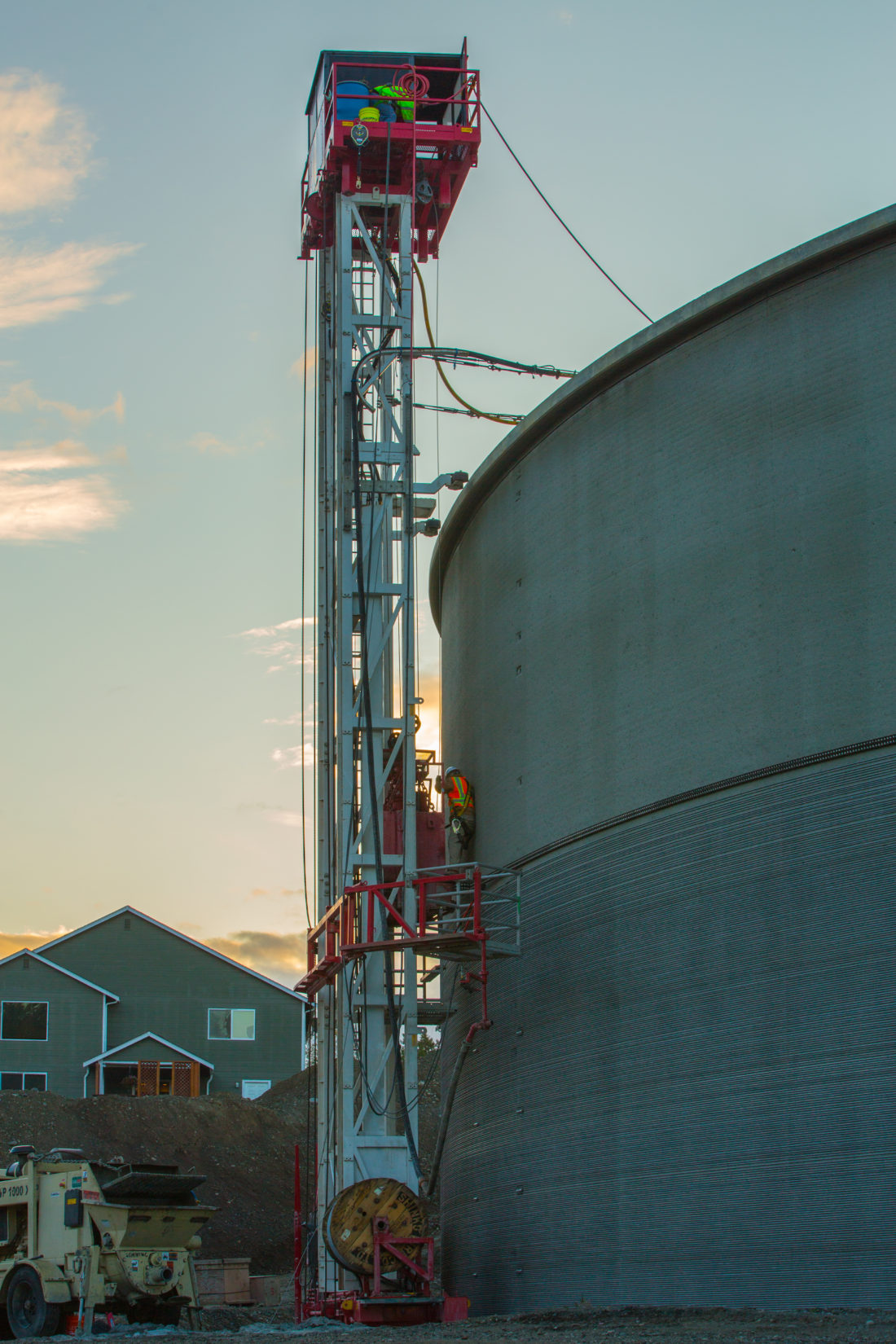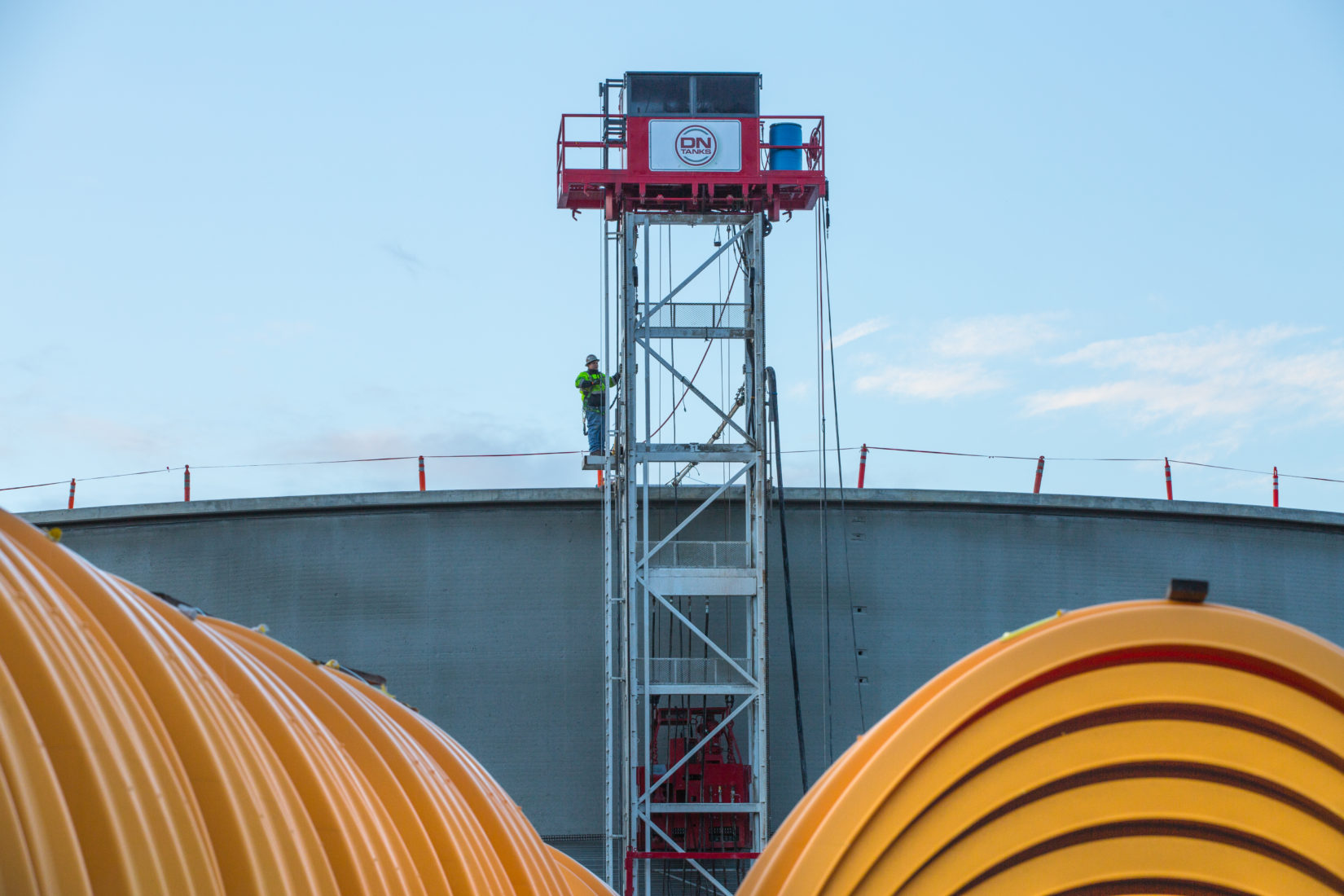At this year's Pacific Northwest Section-American Water Works Association Conference—the Northwest's largest conference and trade…

Prestressed = Less Stressed: Comfort in knowing your water isn’t going anywhere
With over 20 prestressed concrete reservoirs designed, Murraysmith engineers have seen first-hand the value of these facilities. Thanks to prestressing, water system owners can sleep well knowing their tanks are leak free and will survive a major earthquake. Take a look at our most recent prestressed reservoir:
We specify AWWA D110, Type I Reservoirs that include prestressed concrete walls and a robust design allowing them survive earthquakes and stand the test of time. Our lead reservoir expert and chief engineer, Matt Hickey, gives us a closer look at prestressing:
What’s so great about prestressing for concrete reservoirs?
Prestressing is extremely important for water containing structures. For example, in a concrete drinking water reservoir, the internal pressure of the water exerts outward forces on the concrete walls and will place standard reinforced concrete in tension. This can cause cracking and leaks in the walls. To avoid this, prestressing is included on AWWA D110, Type I reservoirs which involves wrapping the walls with miles of wire strand, maintaining compression in the concrete and eliminating cracks and leaks. Wrapping the reservoir is similar to placing steel bands on a wine barrel that hold all the barrel slats in place as the liquid inside pushes out.

Why are prestressed tanks particularly important in the NW?
In addition to maintaining compression in the walls under hydrostatic pressures from the water in the reservoir, in the Pacific Northwest, we also need to consider seismic forces. The lateral forces generated during a seismic event cause water in reservoirs to slosh back and forth. This sloshing creates large forces on the reservoir walls and wants to put the walls in tension. However, the prestressed concrete walls remain in compression while actually being able to flex slightly and move during the event. Following the event, the walls return to their original configuration and continue their job storing water.
How does it work?
Prestressing involves placing concrete under compression prior to supporting any design loads and maintains compression after design loads are applied.
When an AWWA D110 Type I concrete reservoir is circumferentially prestressed, the 3/8-inch diameter strand that compresses the concrete is pulled with a special prestressing machine at approximately 15,000 lbs which equates to a stress of approximately 130,000 psi on the seven-wire strand. By prestressing the walls, the size of the concrete members (i.e. reservoir walls) and the amount of standard reinforcing (rebar) can be reduced, which reduces costs while improving performance of the system.
 Photos and video by Josh Humbert Photography
Photos and video by Josh Humbert Photography




